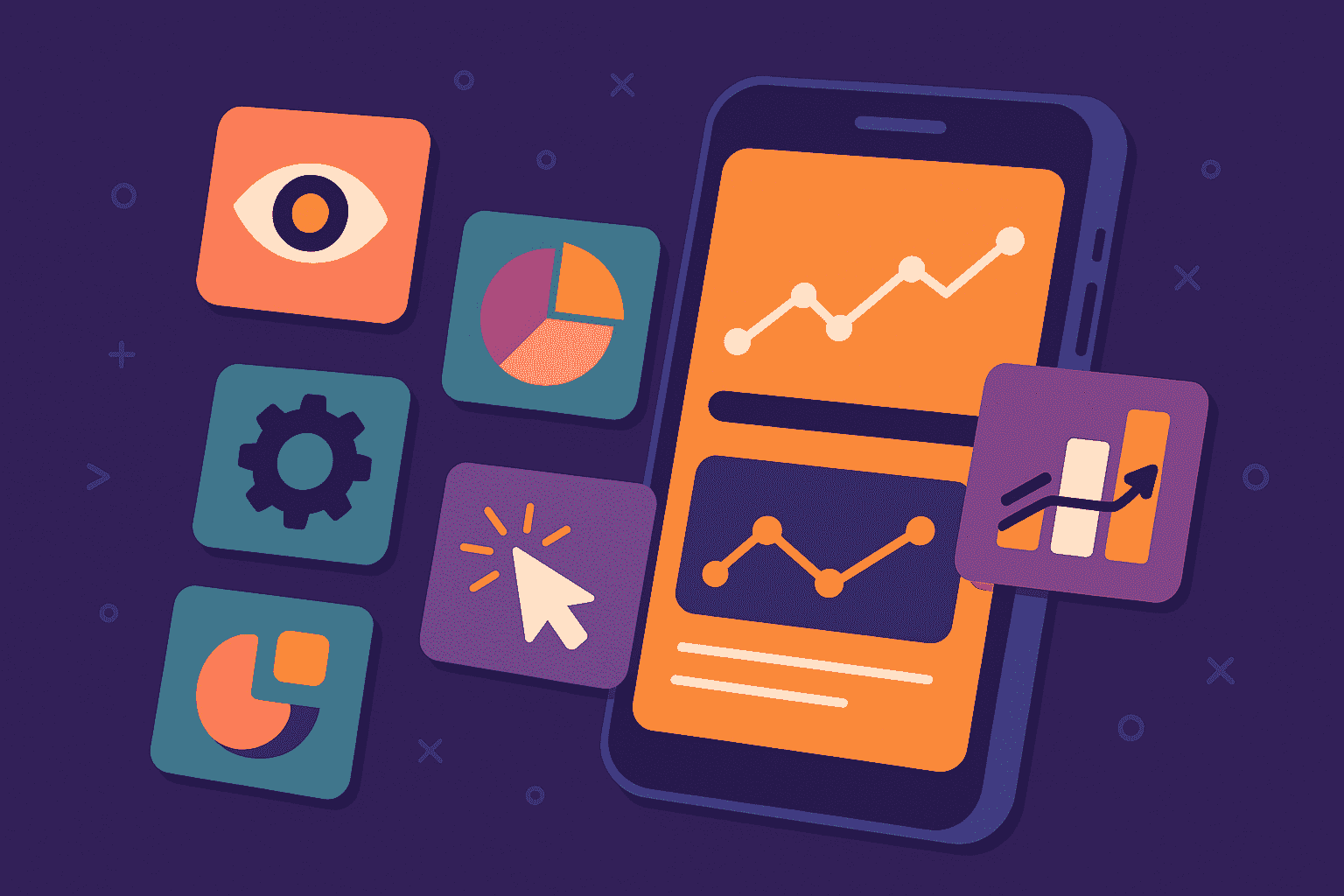
In software development, defects are unavoidable.
Therefore, tracking, recording, and prioritizing these defects to ensure they’re efficiently resolved is crucial for delivering high-quality software products.
Of course, the market offers plenty of defect management tools, which can make the process of choosing the right ones challenging.
That’s why we’ve compiled a list of seven top tools you can use to excel at defect management.
Table of Contents
Shake
We’ll start this list with our own tool, Shake.
Rather than being a full-fledged defect management software, Shake is a software widget (SDK) that integrates with your other tools to facilitate defect management by providing your team with detailed defect reports and user feedback.
Shake’s integration, setup, and use are easy.
The first step is to add Shake’s SDK to the software app your dev team is working on, so your testers and users can submit reports directly from the app when they encounter a defect.
For more clarity, here are the steps needed to start reporting defects with Shake.

As illustrated, when Shake is added to your app under development, users can shake the device—or choose another method, such as a floating button—to submit a defect report.
This prompts Shake to automatically generate a comprehensive report with 71 unique data points.
Here are just some of them.

These and other data points, including user/tester comments, screenshots, logs, recordings, and more will be automatically attached to your user’s defect ticket.
Moreover, Shake provides one-click integrations with other defect management tools.
This enables Shake’s reports to show up on that specific tool’s dashboard, enabling your team to start working on the defect immediately and with more actionable data at hand.

Get unreal data to fix real issues in your app & web.
You can also use Shake to contact or chat with users/testers in real time to ask for more details if necessary, or simply to reassure them your team is working on fixing the reported issue.
Other Shake’s advantages include easy setup and integration, a user-friendly interface, and an excellent value-for-money ratio.
Potential downsides include that it does not fully replace specialized defect management tools; instead, it complements them, making the entire defect management process more efficient.
As for pricing, Shake offers one free and two paid tiers.

All tiers include an unlimited number of app users that can generate an infinite number of bug and crash reports.
The free plan enables you to involve up to 3 team members as administrators (who can access and manage the reports) and provides limited integrations with other tools.
Paid plans, starting at $160 a month when charged annually, offer an unlimited number of internal team members and unrestricted integrations for more efficient defect management.
To sum up, Shake is an easy-to-use tool that allows your app testers and users to submit comprehensive, automatically generated defect reports to your dev team.
When Shake is integrated with other tools, this infuses the defect management process with actionable data from the start, thus simplifying and accelerating defect investigation and resolution workflows.
Bugzilla
Bugzilla is an open-source, free-to-use platform for tracking and managing reported defects.
This means that users/testers can use Bugzilla to report defects, while developers can leverage it to track the lifecycle of reported software issues from investigation to resolution.
Bugzilla offers a rich range of features for users and administrators.
The list starts with its bug search function, which enables new users to easily, in a Google-like fashion, find the reported defect or defects they’re looking for.

Another function is advanced search, where you can configure search parameters to cover very specific queries, such as time-based searches.
Furthermore, you can receive email notifications when someone changes the defect’s status in Bugzilla, and each user chooses what alerts they’ll receive.
Also, you can view bug lists in multiple formats, such as Atom and iCal (i.e., iCalendar).
For instance, the iCal format allows you to use Bugzilla’s schedule management features to see how defect resolution timelines fit into your development plan.
These and other features are supported by a centralized database of all reported defects along with their resolution status.

This database offers advanced filtering options, enabling you to track defects, group them, and assign them to specific developers.
Moreover, when a user starts to report a bug in Bugzilla, the software will be prompted to look for other similar bug reports in the system.
If similar bugs are already reported, the user can join their report with them instead of creating a separate ticket.
A potential downside of Bugzilla is that it does not automatically collect any specific data about the reported defects.
Instead, it relies on the info provided by users submitting the reports.
With that said, if you’re looking for a free, open-source defect management platform with extensive reporting features, Bugzilla might be worth a try.
Rollbar
Unlike Shake, which provides user-generated defect reports, and Bugzilla which manages them, Rollbar automatically detects errors and exceptions in your deployed application’s code without requiring user reports.
Therefore, Rollbar helps you find and fix defects in your code during testing, early adoption, and full-scale implementation of your software development project.
When Rollbar detects an error, it provides a real-time alert to designated team members, so they can prioritize issues and fix urgent defects early.
Moreover, their error grouping algorithm uses machine learning to minimize the number of notifications and provide your team with reliable error signals.

The error reports provided by Rollbar include relevant data like the severity level, the number of affected users, the used operating system and browser, and a stack trace.
These data points help developers quickly investigate and resolve the detected issues.
Rollbar also provides users with defect analytics, i.e., historical error trends and metrics that help dev teams improve their coding quality over time.
Like Shake, Rollbar is another software widget that works integrated with other developer tools such as GitHub and Slack.
Such integrations enable team leaders to prioritize the discovered defects, assign their resolution to specific persons, and track their progress.
As for potential downsides, user comments on software review sites mention issues like slow custom searches and inaccurate, incorrectly titled, or duplicated error reporting.
Now, let’s see about Rollbar’s pricing, which is based on the number of error events rather than on the number of users.

Their free plan covers up to 5,000 error events a month.
Their Essentials and Advanced packages, priced at $15.83 and $32.15 per month, respectively, are intended for up to 25,000 error events a month.
In summary, Rollbar automatically detects errors in your deployed app and provides real-time alerts for errors and exceptions with crucial data for faster defect resolution.

Userback
Userback is another software widget used to collect bug reports and feedback from users.
Similar to Shake, Userback integrates with your other defect management tools to streamline the defect reporting and resolution process.
Both of these tools offer users the ability to annotate their feedback.
For instance, Userback’s users can leverage built-in annotation tools to highlight specific areas on their screenshots, draw their visual remarks, and keep confidential data private.

In addition to this bug and feedback-clarifying tool, one of Userback’s distinctive features is session replay.
This feature allows developers to visually recreate and replay a user’s interaction with your app or website.
In other words, this function captures user actions like mouse movements, clicks, taps, and scrolls and overlays them over the actual app or website interface to produce a video-like playback of their session.

Both annotations and session replay are ideal for understanding the defects reported and feedback provided by clients and users during app design and development.
Since Userback’s interface and functions are user-friendly, even non-technical users can easily provide feedback on encountered defects.
Moreover, users can also hit a record button and give their feedback in a video format, further simplifying the technical aspects of this process.
Potential downsides cited by users include offering no free version, a limited number of features for complex projects, and a lack of integrations for some developer tools.
As for pricing, Userback’s packages are based on the number of feedback reports received, as shown below.

For example, the Starter package, valued at $49 a month, covers 250 feedback per month with 5 team members and unlimited projects.
The Premium package, on the other hand, has no feedback or team member restrictions.
Overall, Userback is an effective tool for collecting actionable defect reports and user feedback that minimizes the need for post-feedback interactions and maximizes the efficiency of your defect management process.
Backlog by Nulab
This means that, in addition to bug tracking, teams can use Backlog to streamline their project management and defect resolution workflows by using collaboration tools such as:
- project time and progress tracking,
- code update releases,
- burndown charts,
- Kanban boards,
- Gantt charts.

Another noteworthy feature of Backlog is its tight integration with version control systems like Git and Subversion (SVN).
This enables your developers to link the reported defects with the relevant code changes, adding to the organization and speed of defect resolution processes.
As for defect tracking, Backlog provides advanced search for duplicate bugs, change history overview, and customizable fields for streamlining team- or project-specific workflows.
When a user encounters a bug, they can find the project in Backlog and create a new issue, where they can attach relevant logs and screenshots and add their comments.
If that project has email integration enabled, the user can simply email the bug details to a specific person, and Backlog will use the email contents to automatically create a new issue in the system.
Here’s how this feature works.

Potential downsides of Backlog include a steep learning curve for new users and some difficulties in creating custom workflows.
Backlog offers a free plan, but this is only for one project and up to ten users.
Their paid plans start at $35 a month (30 users, 5 projects), with higher tiers priced at $100 (unlimited users, 100 projects) and $175 (unlimited users and projects).

You can get 20% off these amounts for an annual subscription.
In summary, Backlog is an all-in-one platform that integrates project management, version control, and defect management in one tool.

Capture, Annotate & Share in Seconds with our Free Chrome Extension!
LogRocket
LogRocket leverages its session replay, defect tracking, and analytics capabilities to automatically identify, prioritize, and show you the top issues affecting your users.
Session replays mean that LogRocket records user actions in your mobile or web application, which can then be replayed when there’s an issue.
Supported by their process analytics, this helps your developers reproduce the bug and fix it.

Likewise, LogRocket uses Galileo, an AI-powered algorithm to sort and prioritize issues by severity.
This allows your team to see the most impactful defects and focus on their swift resolution.

Additionally, LogRocket’s digital experience analytics help companies understand how customers interact with their applications and websites.
Moreover, they can combine LogRocket’s data with info from other systems, such as payment and marketing automation platforms, to gain deeper insights into user dynamics.
To facilitate this process, LogRocket recently introduced the Streaming Data Export function that allows companies to easily access and export their data.
As for pricing, here are the essentials.

To recap, LogRocket is a powerful tool for identifying defects, discovering their root causes via session replay and analytics, and prioritizing their severity, enabling your team to streamline the defect management process.
Jira
We’ll end our list of top defect management tools with a well-established, long-standing project tracking and defect management solution, Jira.
In essence, Jira is an all-in-one project management tool that enables teams to plan, track, and manage the entire software development process, including defect tracking.

As such, Jira provides planning tools like backlogs, roadmaps, boards, and reports needed for efficient software project management.
For defect management specifically, Jira enables teams to report defects, prioritize them based on severity, assign them to specific team members, and track progress until resolution.
Note that Jira can be used for bug reporting by end users via integration with in-app reporting tools like Shake.
Otherwise, it’s commonly used internally by dev team members to report and manage bugs found during testing.
To report a bug, users log into Jira, select the relevant project, and then create a new issue.

Then, they need to fill in the details about the issue and, if helpful, add screenshots or files.
Another useful feature is Jira’s issue-linking.
This function allows team members to establish links between relevant issues, which helps track the root causes and identify patterns.
Potential downsides of Jira include a complex and confusing interface and too many configuration and customization options.
In terms of pricing, Jira offers a basic, free plan and three paid packages charged monthly per user.

All in all, Jira provides a highly customizable platform for planning and executing software development projects, including a range of features for efficient defect reporting, tracking, and resolution.
Conclusion
So, it’s evident that the market offers a wide range of tools you can use to improve your defect management workflows.
Some of these tools overlap in functions, while others complement each other.
Therefore, use this article as a starting point for further research, arm yourself with an extensive list of questions for your shortlisted candidates, and take advantage of free demos and trial periods.
Remember, the right combination of tools can make all aspects of your defect management process more efficient, agile, and cost-effective.






